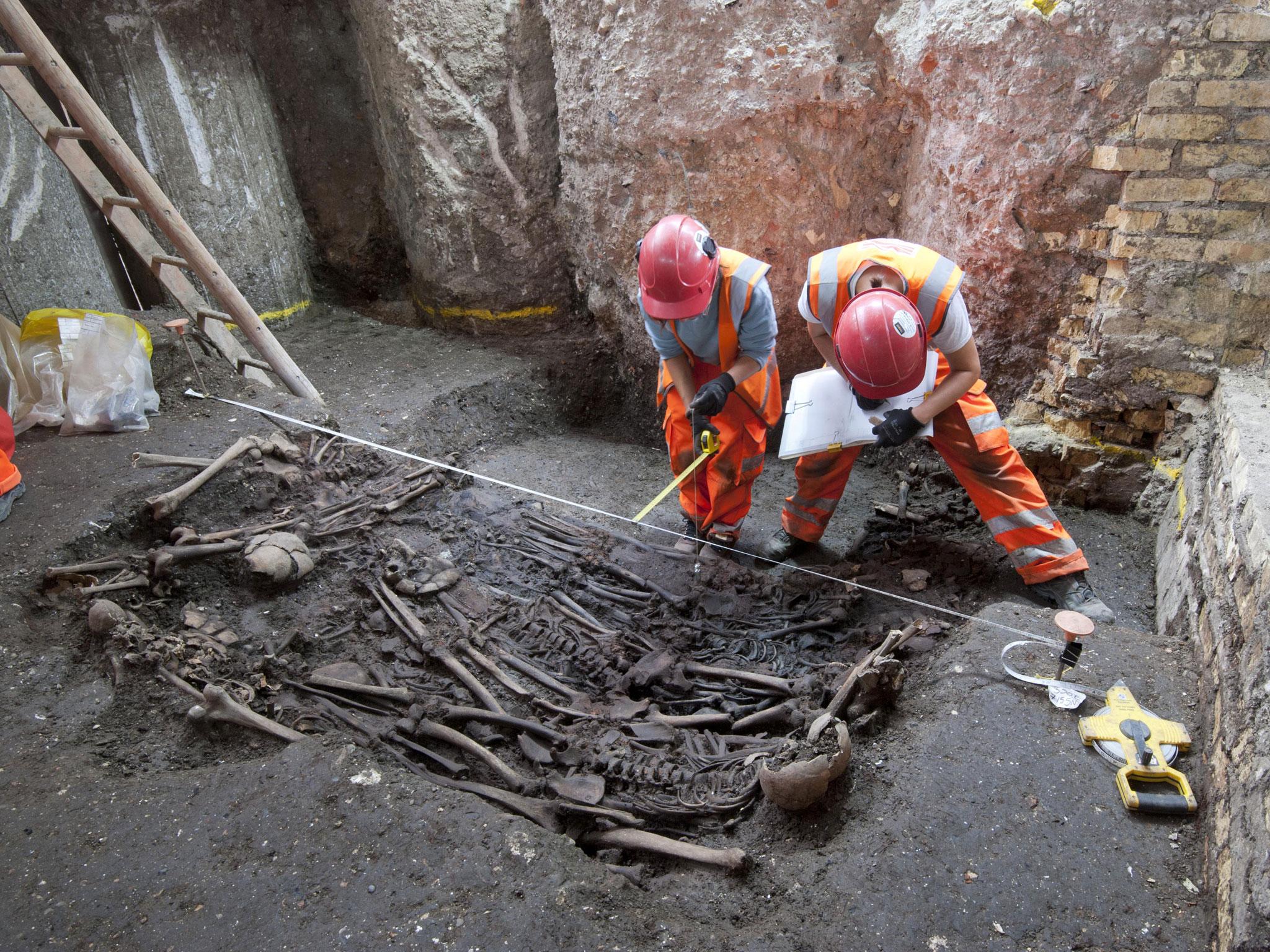Crossrail Liverpool Street excavation: 30 skeletons unearthed in mass grave thought to be victims of 1665 Great Plague
The discovery was made on the 350th anniversary of England's last major outbreak of the bubonic plague

Excavators working on the Liverpool Street site that will house London's new Crossrail station have discovered a mass grave thought to contain 30 victims of The Great Plague of 1665.
Workers made the discovery - on the 350th anniversary of England's last major outbreak of the bubonic plague - while were excavating the Bedlam burial ground in the city.
A headstone was found near the site marked with the date “1665”. Experts believe the skeletons appear to have been buried on the same day, suggesting they were victims of the plague.
Crossrail uncovers 30 victims of The Great Plague of 1665
Show all 6The skeletons are understood to have been buried in thin wooden coffins. The wood has since rotted away giving the appearance of a slumped and distorted mass grave, according to experts.
Osteologists from the Museum of London Archeology (MOLA) will now analyse the skeletons and carry out scientific testing to determine whether the cause of death was the bubonic plague or some other pestilence.
Jay Carver, Crossrail Lead Archaeologist said: “The construction of Crossrail gives us a rare opportunity to study previously inaccessible areas of London and learn about the lives and deaths of 16th and 17th Century Londoners.
“This mass burial, so different to the other individual burials found in the Bedlam cemetery, is very likely a reaction to a catastrophic event. Only closer analysis will tell if this is a plague pit from The Great Plague in 1665 but we hope this gruesome but exciting find will tell us more about the one of London’s most notorious killers.”
Mike Henderson, senior osteologist at MOLA, said the concentration of burials in this uncovered pit provides a new focus for scientific testing and study.
"We hope detailed osteological analysis will help determine whether these people were exposed to The Great Plague and potentially learn more about the evolution of this deadly disease," he said.
Archaeologists have called the Bedlam burial ground London's most valuable 16th and 17th Century cemetery site since excavation began earlier this year, and have already uncovered over 3,500 skeletons.
The burial ground was in use from 1569 to at least 1738, spanning numerous plague outbreaks, and the recent excavation suggests around 30,000 Londoners were buried there during this period.
The site, also known as the New Churchyard, is located at the western end of Liverpool Street and was named after the Bethlehem Hospital which housed the mentally ill, though only a small number of Bedlam patients are thought to have been buried on the grounds.
Subscribe to Independent Premium to bookmark this article
Want to bookmark your favourite articles and stories to read or reference later? Start your Independent Premium subscription today.

Join our commenting forum
Join thought-provoking conversations, follow other Independent readers and see their replies